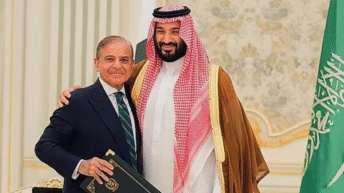
‘The Long Game-How the Chinese Negotiate with India’ by former Foreign Secretary to the Government of India Vijay Gokhale is an essential reading to get an insider’s perspective on how India and China interact over contentious issues and negotiate with each other. Ambassador Gokhale in his previous book ‘Tiananmen Square: The Making of a Protest’ had given an insight of the internal dynamics of Communist Party of China, his latest book talks of China in the multilateral world. The book is devoid of jargon and has been written in a manner which makes it interesting and easy to read. The author has used six case studies to explain the nitty gritties of negotiation and build a case on how India has evolved with experience in dealing with China. As someone who closely follows China as a practitioner and a student, Ambassador Gokhale has used the vast institutional memory of the Indian Foreign Service and his personal experience to create awareness about China among the younger generation of diplomats and common citizens with this book. The last chapter on ‘Lessons for India’ will be a handy guide for political leaders, civil society groups and diplomats while they interact with the Chinese Communist Party.
Vijay Gokhale makes the case that at the time of Indian independence, China and India were ‘unevenly matched’ in their capability to handle foreign relations. Communists in China had greater exposure in handling international affairs vis a vis Indian political leaders who had ‘limited opportunities to handle diplomatic relations’. He has used this lack of experience in handling foreign affairs, among other things, to explain some of the grave misjudgements committed by the Government of India in its initial agreements with China. With experience from hindsight India is more aware and better prepared to deal with Chinese tactics, diplomatic behaviour and their negotiating strategy to advance its own interests.
Apart from being a wonderful document in providing ‘tools’ to unravel Chinese methods, the book is also a treasure trove of historical accounts that have their impact on India-China relations to this day. Some of the aspects discussed by the author are so fascinating that had it not been a former Foreign Secretary writing about them, these would have been dismissed as conspiracy theories. One among them is the role Indian communists played in the India-China relations. The author points out the concern Prime Minister Nehru showed in his communication to Ambassador Panikkar in Beijing and Ambassador Vijayalakshmi Pandit in Washington regarding the recognition of the Communist regime in China. He apprehended consequences among Communists in India in case his government showed hostility towards Communists in China. In a different chapter, the author shares how the Chinese leadership used connections with Leftist parties in India to oppose the India-US nuclear deal.
Ambassador Gokhale also discusses the lack of ‘institutional consultation’ on the Indian side which was in stark contrast to the Chinese side where every aspect was thoroughly researched and discussed. While the regime of the Chinese Communist Party after overthrowing the Kuomintang was in ‘no rush’ to be recognized, India showed haste in recognizing their government. Prime Minister Nehru based his decision of recognizing the Communist regime in China not on ‘securing national priorities’ but by being the first to recognize them as he wanted to be seen as a ‘world statesman and not a British camp follower.’ Despite leaders like Sardar Patel and C Rajagopalachari raising their doubts, Prime Minister Nehru avoided wider consultations and thought ‘most members of the Cabinet have hardly followed these intricate conversations and consultations.’
India’s approach to China in the initial decade lacked any pragmatism and failed to advance its national interest. On the issue of its special privileges in Tibet, neither was India able to retain them nor to leverage them to settle the boundary question. When the Consul General S Sinha wrote about ‘imminent danger to India as a result of Chinese designs on the north eastern frontier’, instead of taking this up for discussion, he was reprimanded for having ‘fanciful ideas.’ Indian policy instead was decided by a ‘note from Prime Minister Nehru on December 3, 1953.’
In the chapter on ‘Lessons for India’, Ambassador Gokhale has enunciated the tools that Chinese use; these include practices, mannerisms, philosophical tenets and arms of the Chinese Communist Party. ‘Meticulous preparation including on the negotiators’, ‘use of non-official means like the media arms’, ‘selection of venue’, ‘indulging in flattery’, ‘playing the victim card’, ‘manipulating time’ and ‘enunciating esoteric principles’ are some of the devices Chinese deploy. Recently, the Chinese Communist Party has used arms like the United Front Work Department (UFWD) and International Development (ILD) to influence civil society, think tanks and political parties globally as well as in India. UFWD is engaging the Tibetan refugees and the Buddhist congregations to advance Chinese interests and influence countries with Buddhist populations. The author also elaborates on various choices Indian interlocutors can employ during negotiations.
‘The Long Game-How the Chinese Negotiate with India’ is the quintessence of almost four decades of serving Indian interests abroad and observing China by Ambassador Vijay Gokhale. With this book he has made many features of the Indian policy towards China accessible to the common man and given insight into what still remains an opaque endeavour. One can only wish Ambassador Vijay Gokhale will someday write a similar account on HH Dalai Lama’s escape to India, the Doklam conflict and the negotiations on the boundary question.






Add comment